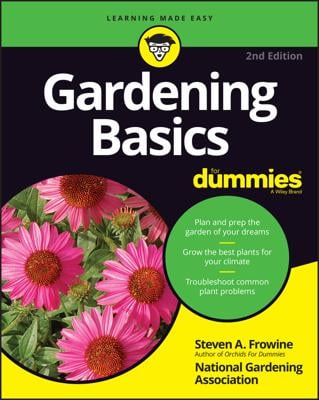As you are planning your flower garden, remember that paths and walkways through the garden serve a number of practical functions. They enable you to get up-close and personal with your garden. The viewer who can sit or stand inside the flower bed, surrounded by the flowers, feels less like a spectator than a person standing at the edge of a bed looking in to the flowers.
You can also use paths to divide large areas into several smaller and more easily managed sections, creating the illusion of a larger space. The total area of the garden is expanded while reducing the size of the flower beds themselves — meaning more floral impact and less work for you.
Walks must always appear to have a logical destination. They can either pass completely through the garden, loop back on themselves, or lead to an objective. A bench, sundial, or piece of art placed at the end of a path gives a sensible reason for stopping at that place, whereas dead ends are unnerving. If you use curves, make them gentle and meandering, not twisting and turning. You can vary the width of the walk and create wide spots for standing or sitting to make the walk more interesting.
Paths are seldom wide enough to be practical or comfortable. Don’t be skimpy. A 30-inch (75 cm) walk is adequate for a wheelbarrow or a lawnmower, but forces visitors to walk single file. Two people strolling side by side need a minimum of 4 feet (1.2 m). Keep an eye on your paths; they have a tendency to shrink through the seasons. Flowers that are content to sit primly along the edges in spring have often thrown themselves out onto the path with careless abandon by midsummer. They lie in wait to tangle and trip the unwary. After a rainstorm, every passerby is slapped and soaked by overhanging or path-encroaching wet foliage. Put a stop to this horticultural version of running the gauntlet with wider walks and timely pruning.
Choose a material and a style that reflect the mood and nature of your garden as a whole. Straight lines and rigid brick or cut stone have a more formal air than curves and gravel. Consider coordinating with existing structural elements — for example, build a red flagstone walk to echo the rusty tones of a used-brick house.
Narrow paths do have their uses, especially as secondary trails that lead into the heart of the flower beds. Their purpose is to let you get close enough to weed and do other chores without stepping on and compacting the soil. Any bed wider than you can easily reach across needs working paths to prevent you from tumbling into the flowers as you try to get hold of a belligerent thistle just beyond your grasp. Make these working paths as unobtrusive as possible to discourage casual use by anyone but you. Extra bricks or pieces of flagstone provide solid footing for you to hop from one to the next as you work.
Equally handy behind flower beds that border a fence or house wall are narrow catwalks. A 30-inch (75-cm) stretch of mulch gives you access for painting and other maintenance without smashing the soil or the plants.
For safety and practicality, select materials for walks that are stable and fairly even. Avoid slippery or highly irregular textures that can cause tripping or injury. A level or only slightly sloping grade is best; anything steeper needs to be broken up with steps.
An almost infinite variety of materials is available for building walks:
Brick or stone: Mortar these onto a concrete base when permanence and ease of care are your first priorities. Utilitarian concrete also offers great durability and flexibility. You can disguise its stark commercial appearance with textures, colors, stains, pebble aggregates, or a brick border. In fact, you can make patterned concrete look like just about any material imaginable. Modular concrete and crushed stone bricks and pavers are available in a vast selection of sizes, colors, and shapes.
Sod: A sod path seems natural in flower gardens, but remember that a lawn demands regular care. You can’t leave lawn paths for more than a week without mowing and edging them.
Gravel: If you don’t like the crunch of gravel underfoot, place the gravel on top of finely crushed stone to provide a firmer surface.
Mulch: A rustic path can be simply a mulch of pine needles, wood chips, or shredded bark.
You can combine mulch or gravel with paving stones or cut rounds of wood. Underlay loose materials with plastic or weed barrier to prevent weed growth. Alternatively, plant the spaces between stepping stones with low, spreading perennials, such as woolly thyme (Thymus praecox ‘Pseudolanuginosus’) or pussy toes (Antennaria dioica). Just be aware that these low growers aren’t very good at weed suppression.

